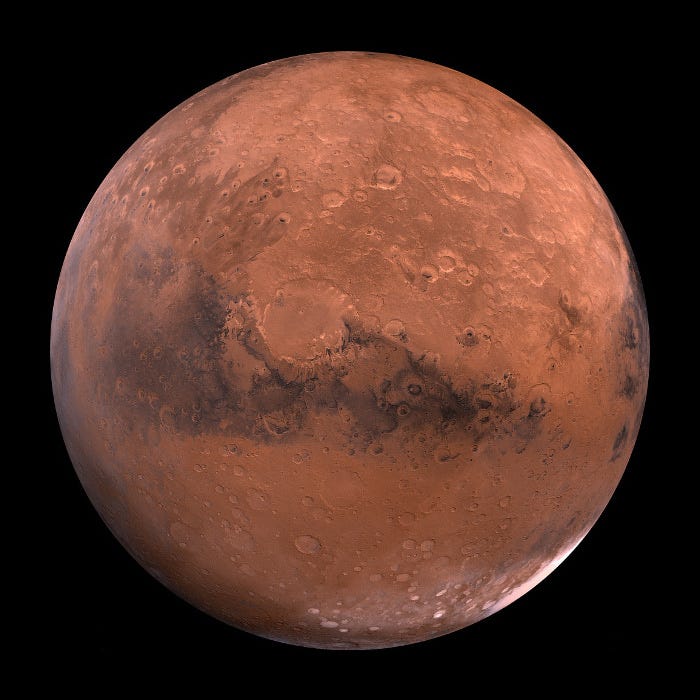Life on Mars? New Developments in the Search
Three new underground lakes have been detected around the South Pole of Mars.

Liquid water is vital for life, so the finding will be of interest to researchers studying the potential for bio-systems elsewhere in the galaxy.
Billions of years ago, water flowed in rivers and pooled in lakes on the Martian surface. But Mars has since lost much of its atmosphere, which means water can’t stay in liquid form on the surface today.
The story comes after Italian scientists published their findings on Monday. Two years after research found, what was at the time, a possible underground lake. Since then they have widened their coverage area and used even more data collected by a radar sounder on the European Space Agency’s Mars Express Orbiter. This helped them find 3 additional lakes.
The main body of water is estimated to be 12–18 miles across and buried 1 mile beneath the surface of the planet. The three newly discovered bodies of water are said to be of varying size and each separated from one another.
The scientists based their findings on more than 100 radar observations by the Mars Express Orbiter from 2010 to 2019. The team was led by Sebastian Emanuel Lauro, from Roma Tre University.
Roughly 4bn years ago, Mars was warm and wet, like Earth. But the red planet eventually morphed into the barren, dry world it remains today. Dr Roberto Orosei, from Italy’s National Institute of Astrophysics in Bologna said “It’s even more likely that these bodies of water existed in the past”
“Of course, the implication of this is that you would have a habitat or something that resembles a habitat… that lasted throughout the history of the planet. As Mars was undergoing its climatic catastrophe and turning from a relatively warm planet — though it’s not clear how warm — to a frozen waste, there was a place where life could adapt and survive.”
What this means is that scientists are suggesting that in the past with running liquid water on the planet there is a possibility that the conditions were suitable enough to sustain a habitat where life could grow. At a stretch scientists are hopeful that due to the evidence of water beneath the surface of the red planet, that some habitat may have been able to adapt and survive through all these years to maintain life.

In order to find these lakes, the team used a technique that is common on Earth when investigating sub-glacial lakes in Antarctica, Canada and Greenland. What is understood is that the reflections gained back from the radar sounder must be reflected from liquid H20. Due to the depth of the lakes there is not enough heat for the ice to melt naturally, therefore scientists have concluded that the water must contain high volumes of salt in order to stay in liquid form. The chemical salts significantly lowering the freezing point of the water.
While to some this may seem a sure fire, definitive answer to the age old question of ‘Is There Life On Mars?’. In reality the extreme salt content of the water poses a serious challenge to the survival of microbial life.
Interest in science starts young, astronauts and physicians often find their passion for pushing boundaries and space exploration whilst in school. If you or your child are looking for extra classes to boost your studies, head to Sherpa for quality tuition from experienced tutors.





Comments
Post a Comment